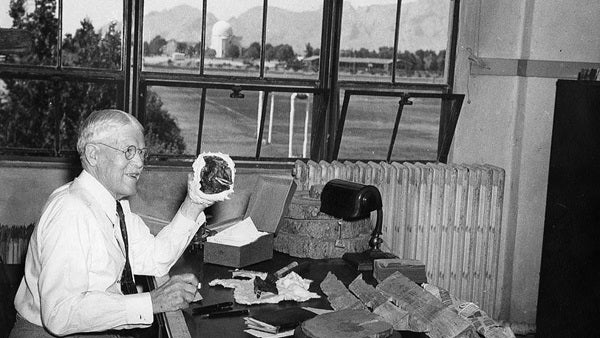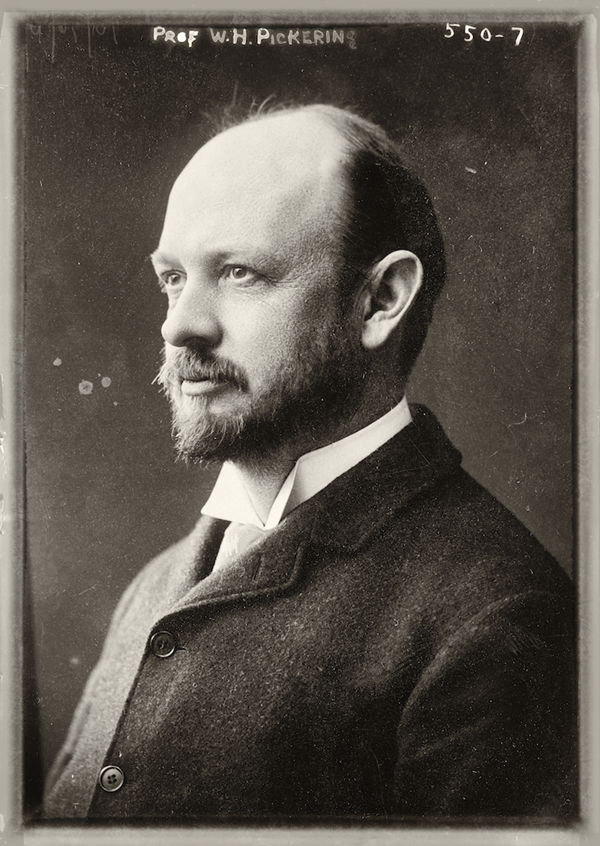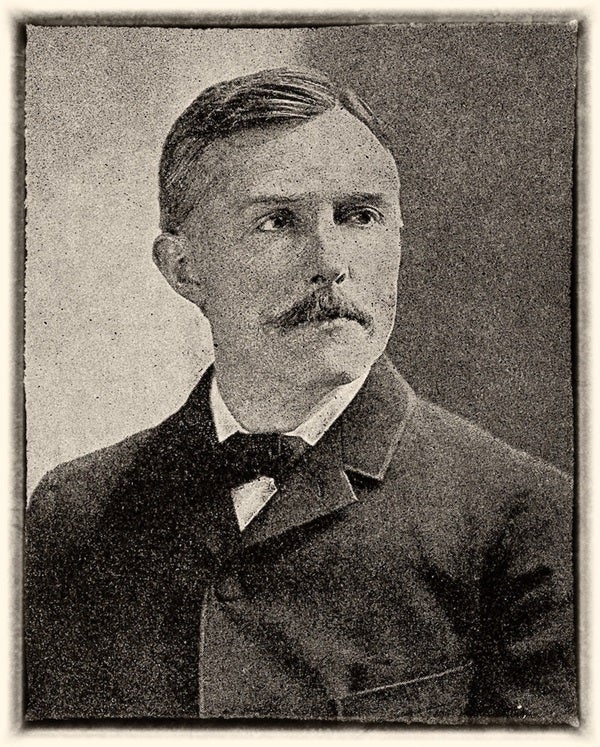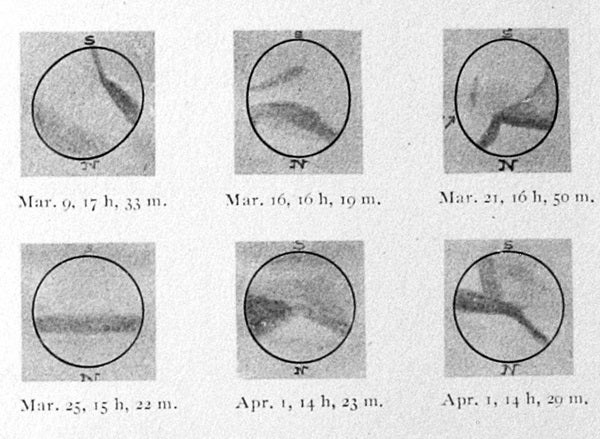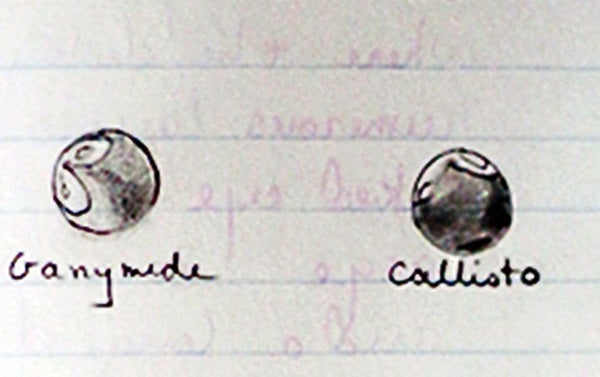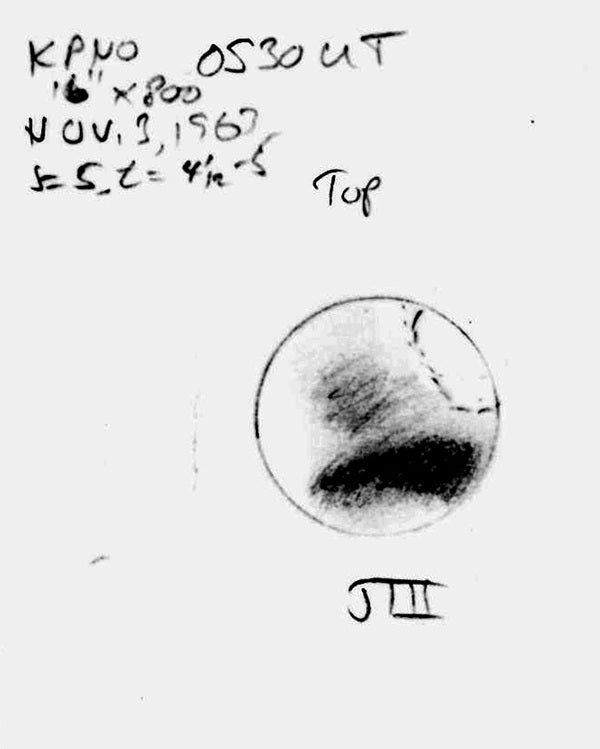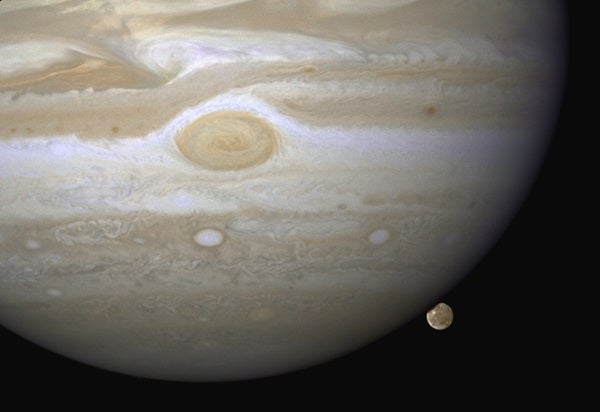If the seeing (atmospheric steadiness) is good, a 6-inch or larger telescope at high magnification will reveal the tiny but distinct disks of all four Galilean moons. Moreover, under really steady seeing with a medium-size scope, experienced observers can occasionally glimpse elusive markings on Ganymede, Jupiter’s largest moon.
Observational history
Exactly what could be observed on the jovian moons was a topic of considerable dispute in the late 19th and early 20th centuries. In 1900, astronomers Andrew E. Douglass and William H. Pickering published an extensive monograph in the Annals of Lowell Observatory, Volume II, detailing observations of Jupiter and its moons that they made in 1894 and 1895.
Working in Mexico and at Lowell Observatory in Flagstaff, Arizona, with two refractors — an 18-inch Brashear and a 12-inch Clark — mounted in tandem, the astronomers undertook an ambitious visual program. Their goal was to estimate the ellipticity, rotational periods, and surface features of what they called satellite I (Io), II (Europa), III (Ganymede), and IV (Callisto). The common names, originally assigned by Galileo’s contemporary Simon Marius, did not become official until the 20th century.
Pickering was a rather eccentric individual; among other extraordinary theories, he believed that Jupiter’s moons were not solid bodies but low-density aggregates of dust and meteoric debris. That undoubtedly colored his impressions that they appeared elliptical through the telescope, as well as accounts for his obsession with measuring their “ellipticity.” Other observers subsequently showed that the presumptive ellipticity of the moons reported by Pickering was illusory, likely due to contrast or astigmatic effects.
Douglass, a talented astronomer and botanist, was at that time strongly influenced by his boss, Percival Lowell, regarding his views of Mars and its putative network of canals. He was later dismissed by Lowell for doubting their reality. After moving to the University of Arizona in 1906, Douglass became head of Steward Observatory and founded the new science of dendrochronology, which dates historic events using the annual growth rings of trees.
Differences arise
The Lowell observations show predominantly banded and crossed streaks on all four satellites, and also provide detailed descriptions of each. Ganymede is summarized as: “The third satellite was observed with much greater ease and gave more satisfactory results. The detail is conspicuous, and consists of northern and southern belts parallel to the equator, and other markings. The northern belt becomes visible 2.2 [days] after superior conjunction. Its position is easily determined, and between 1894 and 1895 gives a means for measuring very exactly the rotation period. It shows that the rotation of detail agrees with revolution about Jupiter within 15 minutes. The north polar cap seen by some observers is immediately north of this conspicuous northern belt and is probably caused by contrast.”
Other astronomers later showed that Jupiter’s main moons are tidally locked and rotate synchronously with their planet like our Moon. In his subsequent 1897 paper, Douglass appears more certain of the key markings he described: “On February 20th … an interval of extremely good seeing revealed the Great Northern Belt in longitude 260° to 20°, with perfect distinctiveness and definition.”
In sharp contrast to Douglass and Pickering, Barnard’s drawings of Ganymede and Callisto show far more diffuse features: “Though conspicuous enough, they were so vague in form that at no two times was it possible to say definitely that the same marking was under observation.” He goes on to say, “I have been very much interested in Mr. Douglass’ paper on the third and fourth satellites of Jupiter.” After Barnard mentioned that he used the much larger 36-inch Lick refractor to make his observations, he wryly added, “According to Mr. Douglass’ drawings and statements, he finds these satellites covered by a series of fine dark lines, the maximum width being estimated at less than 0.1″ or 200 miles. In appearance, from the drawings, these markings very much resemble those seen at the same observatory upon Mars, Venus and Mercury.”
These strident comments, well documented in William Sheehan’s memorable biography of Barnard, The Immortal Fire Within, point to the rivalry and disagreements between the two observatories. They were most glaring with respect to the putative martian canals and similar features as depicted by Percival Lowell and others. Much of the divergence hinged on Lowell’s claims that while his telescopes were of smaller aperture, seeing conditions at the high and dry elevation of Mars Hill were unequaled.
To that, Barnard countered that it was his belief that no existing telescope, except the 40-inch Yerkes refractor, “is so capable of showing the surface features of these satellites as the Lick 36-inch. I also believe there are brief intervals of good seeing at the Lick Observatory which are not excelled if indeed they are equaled at any other observatory.”
In addition, in the 1940s, French astronomer Bernard Lyot and others reported visible details on all four Galilean moons. They were observing with a 24-inch refractor at Pic du Midi Observatory in France, known for its legendary steady seeing and clear skies.
Current observations
One can argue that jovian moon detail should be well within visual reach of large, professional telescopes, but what about smaller, more typical amateur instruments? Clearly, it depends on a number of factors: the quality of the optics, the seeing, the magnification, and perhaps most importantly, the observer’s experience and visual acuity.
Before the Voyager spacecraft flybys of Saturn in 1980 and 1981, Astronomy magazine’s eagle-eyed Stephen James O’Meara (then a student) spotted the spokes in the planet’s B ring. He also accurately determined the rotation period of Uranus with the 9-inch Clark refractor at Harvard College Observatory. In 1983, O’Meara went on to spot mottled markings on Ganymede and Callisto with this same telescope. Regarding the latter, he advises, “Seeing detail on the jovian moons requires exceptional seeing, and the best views are [obtained] through astronomical twilight. Spend a minimum of 30 minutes looking, waiting for moments of perfect seeing, and confirm and reconfirm any initially suspected structure at least three times.”
Likewise, during his student days, Cruikshank reported detail on Ganymede with his 12-inch reflector, a 16-inch reflector at KPNO, and the 40-inch refractor at Yerkes Observatory. More recently, co-author Aerts sketched and simultaneously imaged details on Ganymede with a 14-inch Schmidt-Cassegrain telescope.
These results once again raise questions as to the reliability of visual reports. In an effort to answer them, we undertook a side-by-side comparison of visual observations from several sources, with modern digital images of the Galilean moons. Making allowances for stylistic differences among observers, as well as instrumental and atmospheric variances, it seems clear that visual reports of features on Jupiter’s largest moon, Ganymede, must be taken with considerable skepticism. While there is general agreement that the satellite exhibits diffuse dark and light regions, and there are references by several of the early observers to “bright polar caps,” the notes of Barnard, O’Meara, and Cruikshank all urge caution in their accompanying notes: “extremely difficult”; “probably unreliable”; “seemed real, but …”; and so on.
On the other hand, today, thanks to the tremendous advances in digital imaging and processing, amateur astronomers with just medium-size telescopes can capture outstanding images of Jupiter and its moons, unheard of just a decade ago. It is indeed a golden age of amateur astronomy.

